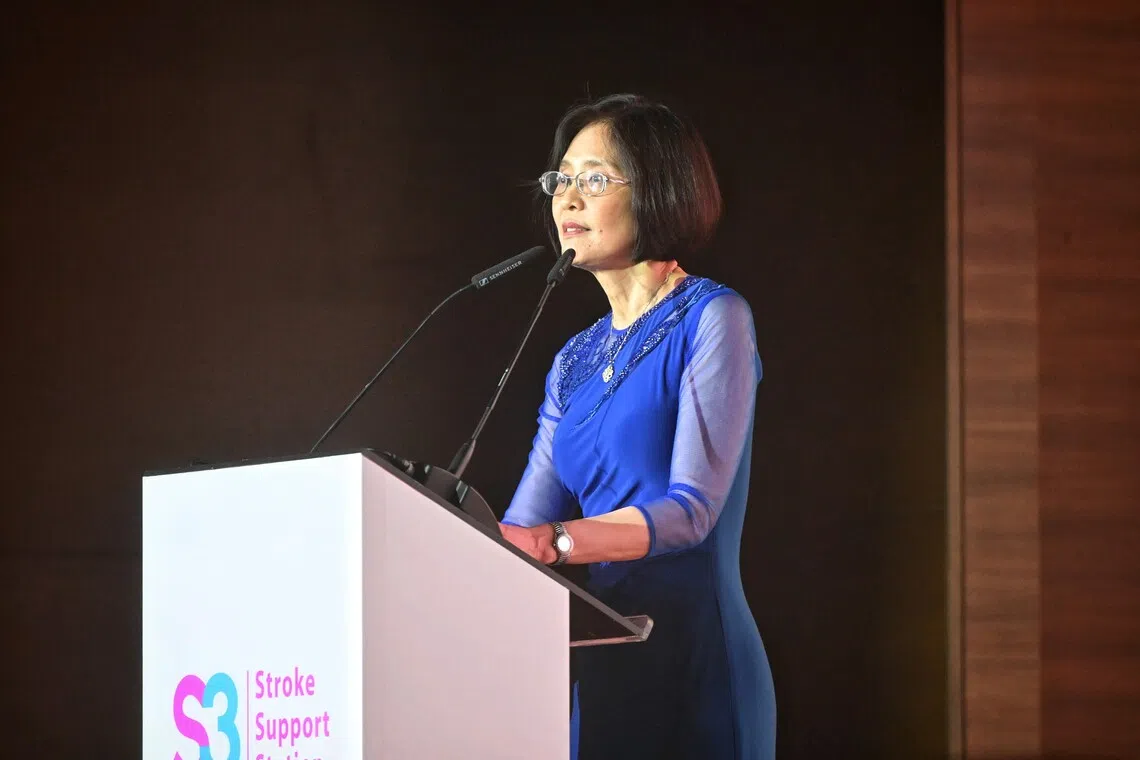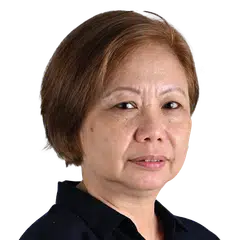Only 2 in 5 in S’pore know to call an ambulance when someone is having a stroke: Study
Sign up now: Get ST's newsletters delivered to your inbox

The study aimed to gain insights into the public and corporate perceptions about stroke and identify areas where gaps were.
PHOTO: ST FILE
Follow topic:
- A study by Stroke Support Station (S3) found only 40 of Singaporeans know to call an ambulance for stroke victims despite high symptom awareness.
- Stroke cases in Singapore rose from 5,890 in 2010 to 9,702 in 2022, with a concerning 20 per cent rise in younger adults.
- Stroke Support Station will launch a stroke-focused adaptive gym in Ang Mo Kio in 2026 and an active ageing centre in Boon Lay.
AI generated
SINGAPORE – Not everyone knows to call for an ambulance when they come across someone experiencing a stroke.
In fact, only two in five people in Singapore knew this correct emergency response, a study commissioned by community-based agency Stroke Support Station (S3) has found.
This is despite more than four in five of the general population having a high understanding of what the stroke symptoms are, and seven in 10 being able to identify the biggest risks associated with the disease.
Stroke occurs when blood flow to a part of the brain is disrupted, either by a blockage (ischaemic stroke) or a ruptured blood vessel (haemorrhagic stroke), leading to brain cell death.
It is the fourth leading cause of disability in Singapore, and according to the latest data from the National Registry of Diseases Office (NRDO) in 2022, the total number of stroke cases reported increased by 64 per cent between 2010 and 2022.
It rose from almost 6,000 cases in 2010 to about 10,000 cases in 2022, and stroke accounted for 3.3 per cent of Singapore’s total burden of ill health and premature death in 2021, and 6 per cent of all deaths in 2022.
A study of nearly 900 participants served as an independent needs analysis carried out by Verian Group, a global agency specialising in research, evaluation, evidence and communications. Conducted in early 2025, it aimed to gain insights into public and corporate perceptions about stroke, and identify areas where gaps were.
It covered areas such as public awareness and information behaviour.
It found that seven in 10 of the public could identify three major stroke risks – high cholesterol, high blood pressure and diabetes – while almost nine in 10 understood at least three symptoms of the disease, namely weakness, numbness and slurred speech.
Yet, less than half knew to call for an ambulance if they come across someone suffering from stroke.
About 18 per cent would choose to “tell someone” and 15 per cent said they would “contact my family doctor”.
When it came to getting general health information, the majority, 66 per cent, relied on healthcare professionals, 56 per cent on government websites, while 51 per cent would turn to the internet.
There were also notable differences in information sources among different communities.
Malays showed a higher reliance on social media and family and friends than other ethnicities, while the Chinese community relied heavily on internet searches.
A key area of concern for the healthcare industry is the changing age profile of stroke survivors.
Stroke incidence is rising among people aged 15 to 49, mirroring a global shift towards earlier onset.
Based on the 2022 NRDO data, the number of cases in this group rose by at least 20 per cent over the last decade, which “challenges the myth that stroke is exclusively a disease of the elderly”.
Public relations specialist Dominique Low, 53, who suffered a stroke at the age of 48, said: “Most people wouldn’t think a stroke could happen to them or a loved one, especially if they are in their 20s to 40s. Many downplay the signs – assuming it’s just dizziness or a bad headache – but every minute counts. Recognising the symptoms and calling an ambulance immediately can make the difference between recovery and lifelong disability.”
Despite this, older age groups still account for the highest overall reported cases of stroke, as the risk doubles with every decade after the age of 50 years.
Men account for about 60 per cent of all stroke cases each year, but women typically experience stroke onset later in life.
The findings were announced at the Stroke Support Station’s 10th Anniversary Gala – A Decade of Stroke Care, held at The Ritz-Carlton, Millenia Singapore on Oct 23.
Mr Teo Chee Hean, senior adviser to the Prime Minister’s Office and chairman of Temasek Holdings, was formally named as S3’s patron at the event.
He was presented with the agency’s jacket by S3 chairman Chang Hwee Nee.
Mr Teo, whose late wife Chew Poh Yim founded S3
Citing Prime Minister Lawrence Wong’s National Day Rally speech where he said Singapore must be a “we first” society,
In this way, “a ‘we first’ society will keep Singapore going and growing strong”, he said.
In her speech, Madam Chang announced that the agency will launch Singapore’s first stroke-focused adaptive gym

Stroke Support Station (S3) chairman Chang Hwee Nee speaking at S3’s 10th Anniversary Gala – A Decade of Stroke Care.
ST PHOTO: ARIFFIN JAMAR
The gym is designed to bridge the gap between clinical rehabilitation and long-term community fitness.
“The gym serves to reframe the mindsets of stroke survivors from one of a patient in recovery to an athlete in training,” she said.
Highlighting resilience after surviving a stroke, comedian Suhaimi Yusof,


